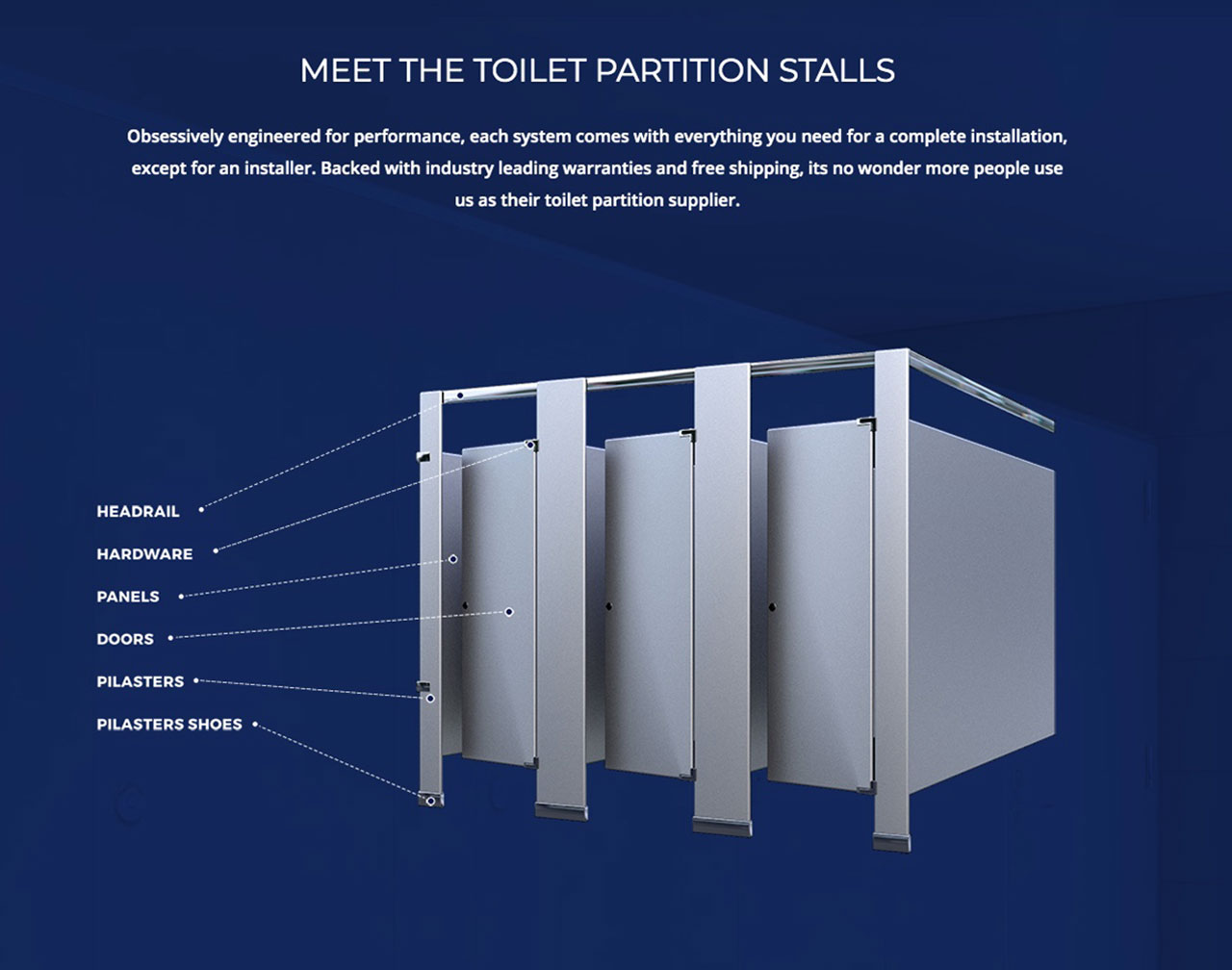
Public toilets can see hundreds of people daily. For this reason, the cleanliness of these facilities is imperative. When it comes to toilet partitions Los Angeles, cleaning them effectively would require more than simply wiping any visible dirt away. Depending on the type of material a toilet partition is made out of, there are different ways to thoroughly clean them to ensure the overall sanitation of a public toilet.
What Affects the Cleanliness of Toilet Partitions Los Angeles
Toilet partitions are toilet enclosures. People do their business so close to the walls that something’s bound to splash on or come into contact with the partitions. If there’s a lot of traffic in a public toilet, one can expect a whole lot of different stains to haunt your toilet partitions.
Dirt stains, grease stains, oil stains, cosmetic stains, and graffiti can all affect the cleanliness of a public restroom’s toilet partitions. Left alone, they can accumulate and become quite unsightly for restroom users to see.
While most of these stains can be dealt with using just warm water and mild soap, more stubborn stains would require the use of stronger chemicals and the application of certain cleaning methods and techniques.
.tdi_67_596.td-a-rec{text-align:center}.tdi_67_596 .td-element-style{z-index:-1}.tdi_67_596.td-a-rec-img{text-align:left}.tdi_67_596.td-a-rec-img img{margin:0 auto 0 0}@media (max-width:767px){.tdi_67_596.td-a-rec-img{text-align:center}}
The Different Materials and Specific Cleaning Instructions
In cleaning a toilet partition, the material it is made of must be considered. Some cleaning chemicals, supplies, and methods that are effective for one material can prove detrimental to another.
Here are the different toilet partition materials and the ways they may be effectively cleaned:
-
Phenolic
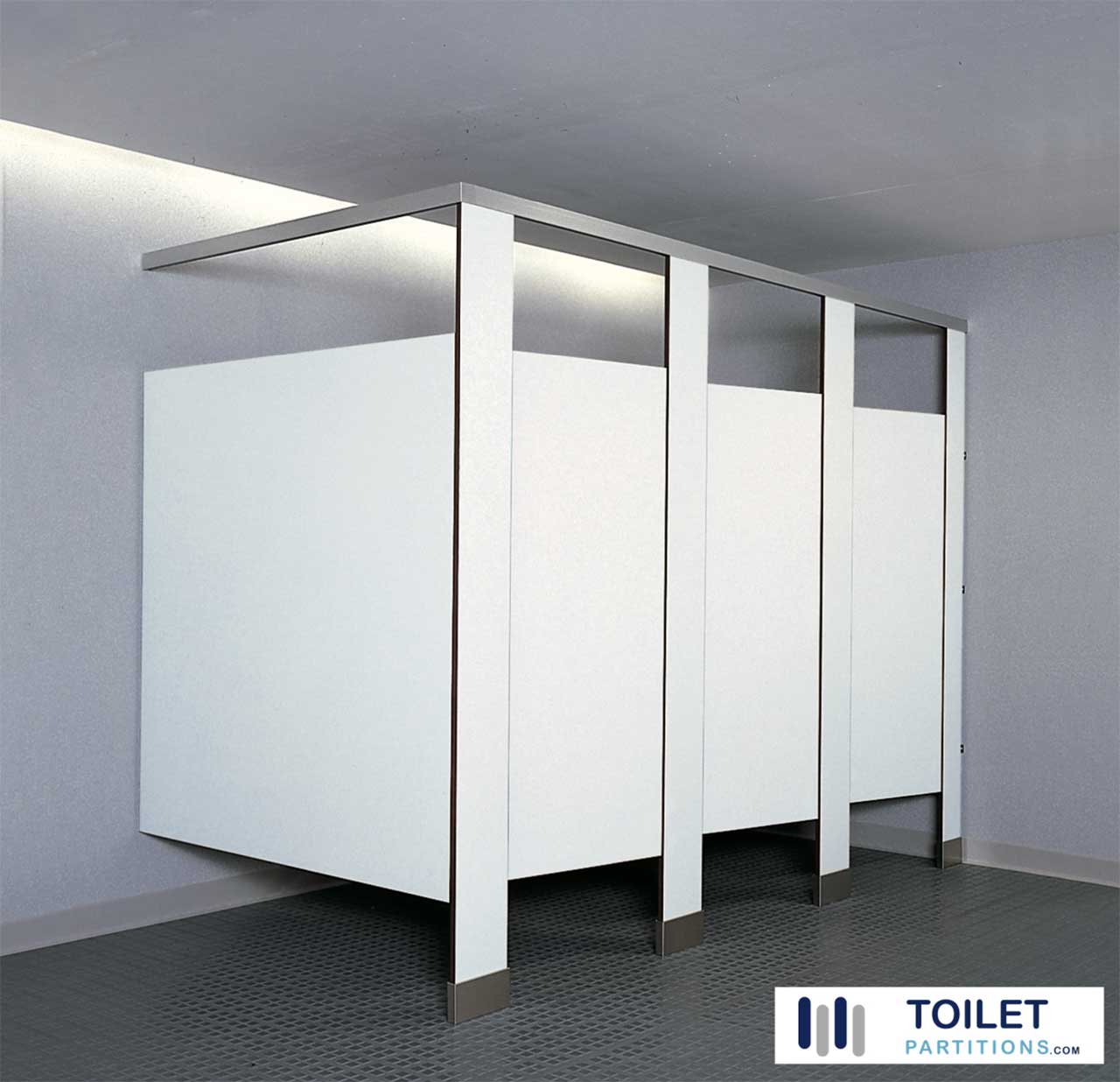
Phenolic toilet partitions are usually found in high-moisture areas or areas near bodies of water like the ocean. This is because this particular material is highly water-resistant – it doesn’t absorb water as other materials do.
This material is also resistant to oil and bacteria, making it the easiest toilet partition to clean. With these desirable properties, this material doesn’t come cheap.
Cleaning Phenolic Toilet Partitions
For regular cleaning, phenolic toilet partitions should be cleaned with a gentle cloth or soft-bristled brush with warm water and mild soap.
When dealing with marks and stains, one may try the following cleaning supplies/methods for this material:
- Any general cleaning agent
- Degreasing agent
- Baking soda and water
It is not advisable to use intense cleaners and bleach-based cleaners as they may do some damage and discoloration to the material. However, for special cases like graffiti, one can use a commercial graffiti cleaner.
Because phenolic is water-proof, one can safely rinse any cleaning product used with water. Once fully dried, the toilet partition may be topped off with a coating of furniture polish.
-
Plastic Laminate
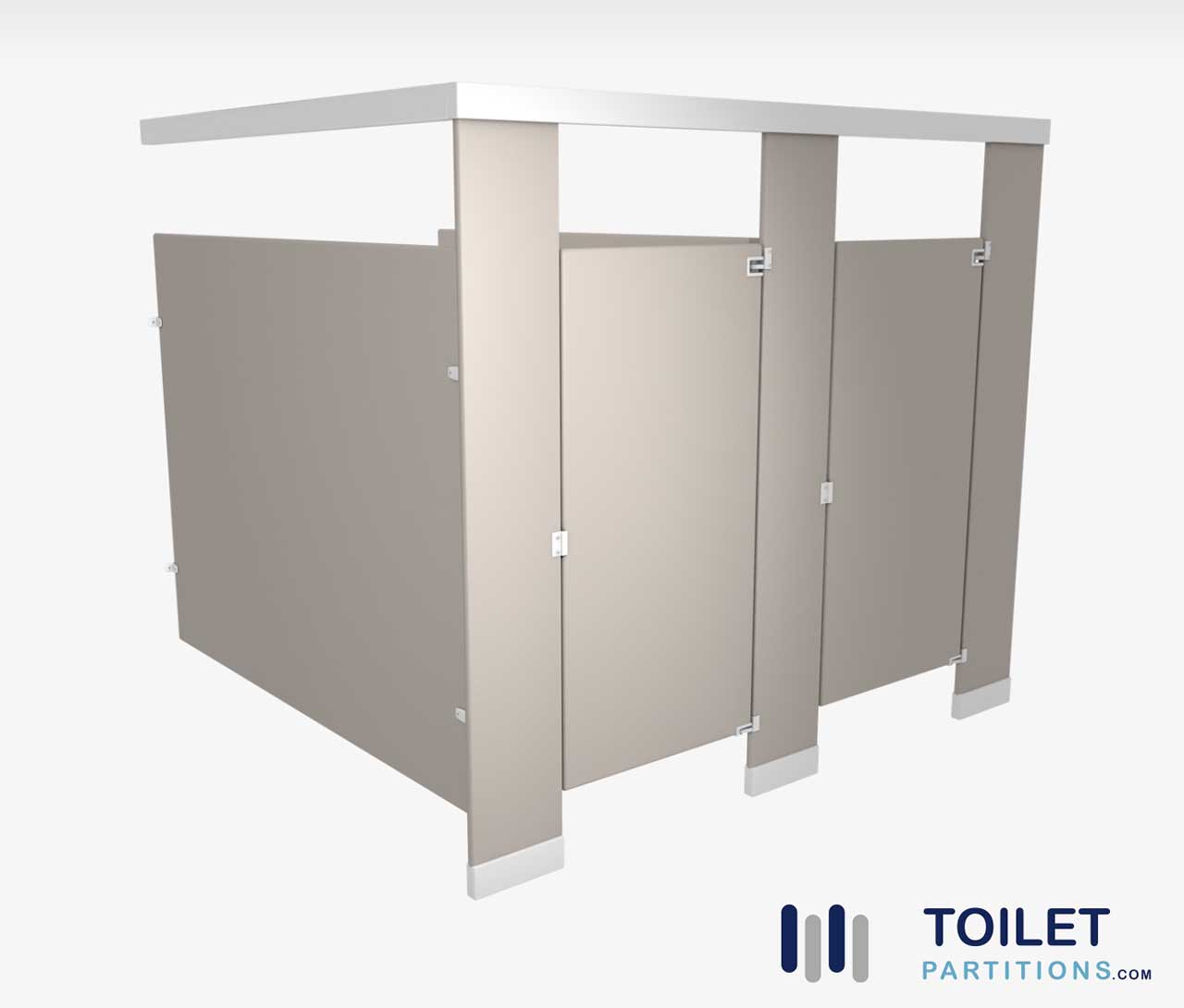
Unlike phenolic toilet partitions, plastic laminate toilet partitions are porous – they absorb water and moisture easily. This should be taken in mind when cleaning this material.
Luckily, these partitions are durable. Dirt, grease, and cosmetics are unable to penetrate its laminated surface, so one doesn’t have to worry about these being absorbed into the partitions.
Cleaning Plastic Laminate Toilet Partitions
While plastic laminate partitions cannot be exposed to water as much as phenolic ones can, they still have a lot in common in terms of effective cleaning.
Again, regular cleaning would only require a damp, gentle cloth or soft-bristled brush. Minor stains can easily be dealt with using a mild cleaning agent.
Stubborn stains, on the other hand, would call for a stronger chemical. A cleaner with acetic acid is recommended as it is effective in removing stains.
Like phenolic partitions, plastic laminate partitions can be damaged and discolored if abrasive agents are used. Polishes should not be used as well as these can lead to unsightly residue buildup over time.
This material cannot be rinsed with water due to its porous nature. Cleaning products can be removed with the use of a damp cloth.
-
Solid Plastic
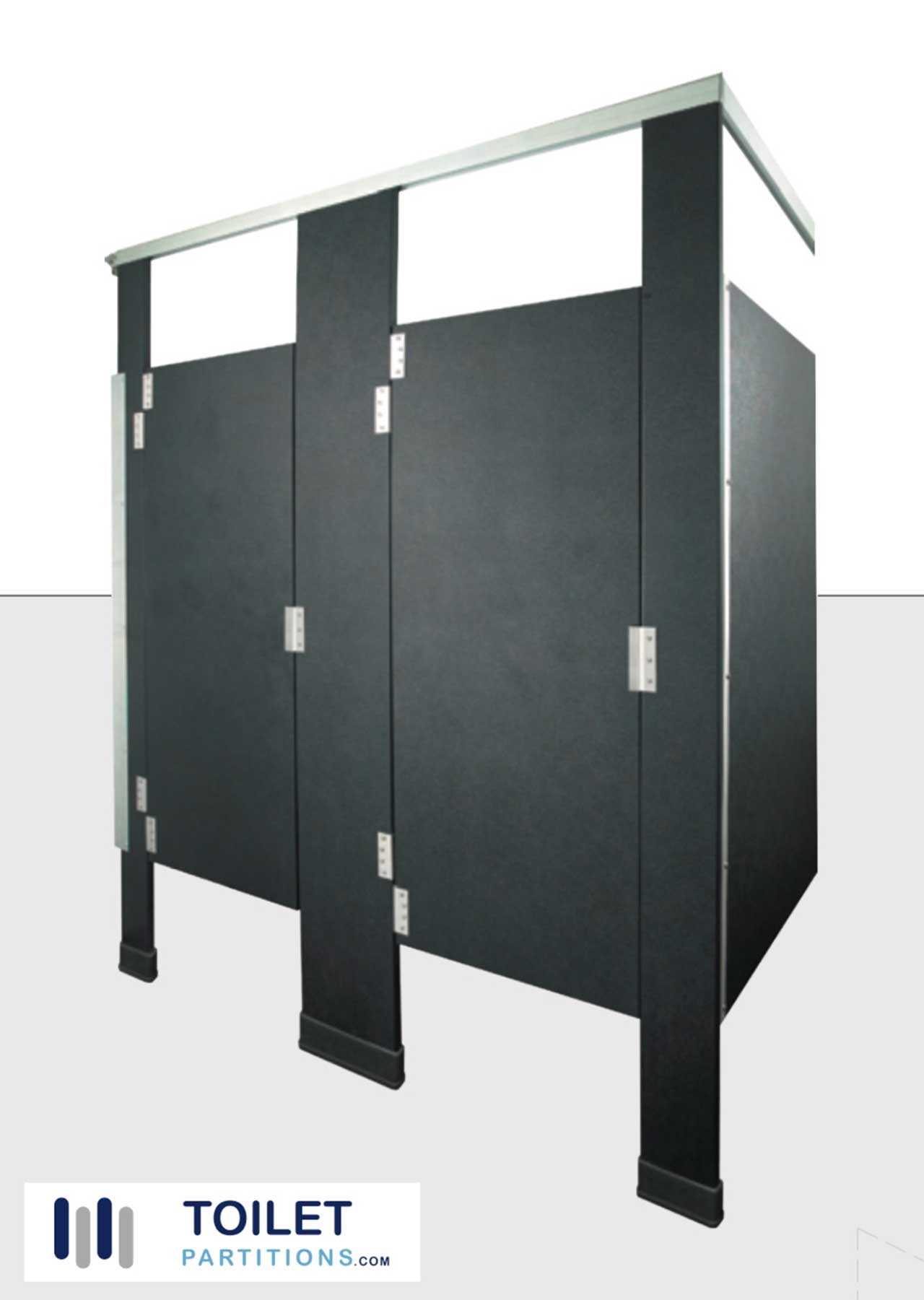
Solid plastic or HDPE is water-resistant, making it a great material for public restrooms in high-moisture areas. Apart from not being able to absorb water, it also doesn’t absorb odor, doesn’t mold, and doesn’t rust. This makes it easy to clean.
Cleaning Solid Plastic Toilet Partitions
Basic cleaning for this material is the same as the others: clean it with a mixture of warm water and a mild detergent using a gentle cloth.
Marks and stains can be dealt with the following:
- Non-abrasive cleaners
- Industrial strength cleaners
- Baking soda and water
Like phenolic, solid plastic can be hosed down to rinse off all cleaning products used on it.
-
Stainless Steel
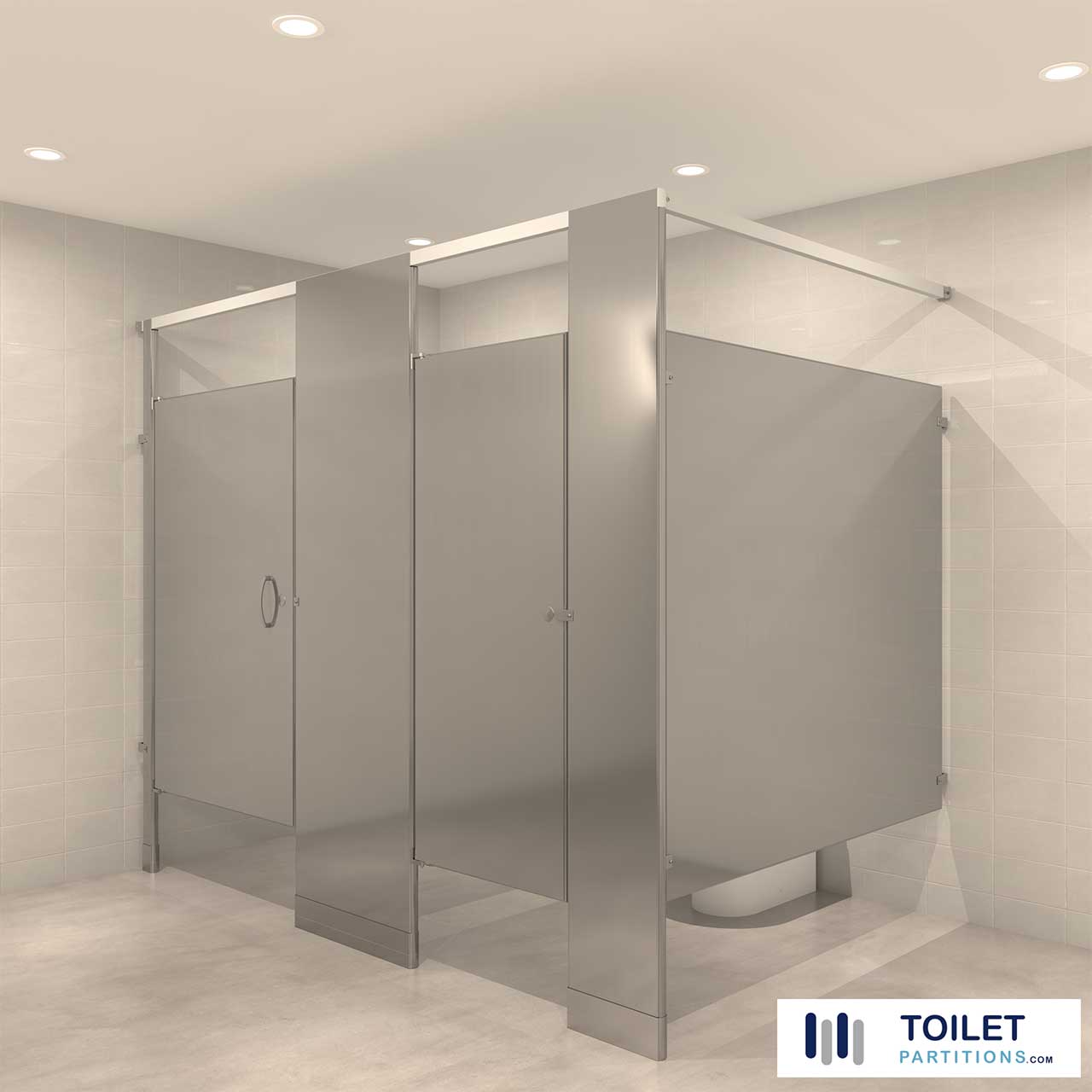
Stainless steel toilet partitions are pricier than other materials because they look good and are easy to clean and maintain. To add to that, they’re non-corrosive as well! It is no wonder that this material is an extremely common choice for toilet partitions around the country.
Cleaning Stainless Steel Toilet Partitions
Daily wiping of these partitions is advised. This should be done with warm water and a diluted ammonia soap using a gentle cloth. It should be noted that the cloth used should be wrung out well – it should only be damp, not wet.
In the case of dirt buildup, one can use a cleaning solution specifically made for stainless steel surfaces.
When dealing with grease and oil, however, the basic cleaning solution can be used but with the addition of a solvent like an isopropyl alcohol, acetone, or methylated spirit into the mix.
One drawback to stainless steel toilet partitions is its susceptibility to mineral deposit stains. Fortunately, they can be easily scrubbed off with an abrasive cleaner.
There are some cleaning products to avoid when cleaning stainless steel toilet partitions:
- Bleach-based cleaning agents
- Acid or Alkaline cleaners
- Steel wool
- Harsh scrubbing pads
Bleach, acid, and alkali damage stainless steel and leave behind brown spots that will look like rust marks. Steel wool and harsh scrubbing pads can ruin the smooth finish of the stainless steel and replace it with a rough, scarred surface.

